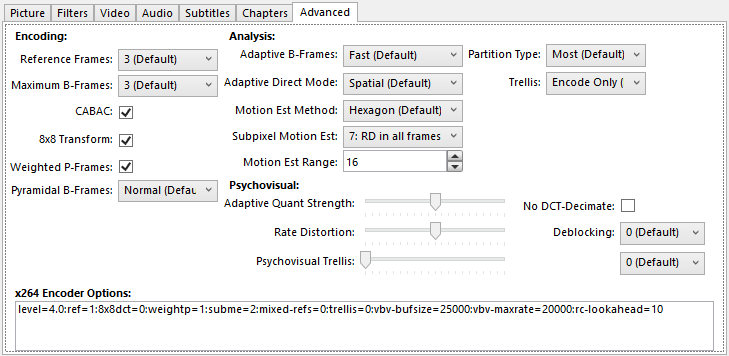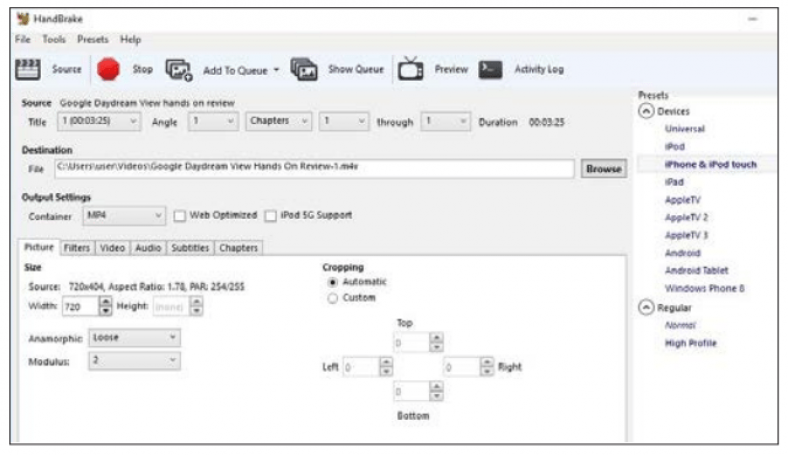

Does this mean that they use some form of peak gain instead of full DRC? Is the parameter simply a setting of how many dB you want the quieter signal peaks to gain? Or do they use some sort of standard values for most settings, and the parameter is to specify a ratio, such that entering a parameter of 2.0 would result in a 2:1 ratio? (Though if that is the case, then why does it use a floating point)? Or is the system actually much more complex than that, and the documentation merely dumbed it down a lot for average users? The help documentation states that the DRC will raise the audio of quieter signals to be louder and closer to the loudest peaks, without changing the peaks. I'd like to be able to achieve similar results from Handbrake's integrated DRC, but with having only one parameter to set, I need to know more about how that parameter actually works and interacts with the DRC algorithm used by Handbrake. "Make-up gain for 0dB after compressing": enabledįor my purposes I find this to be nearly perfect in almost all cases, as it results in strong DRC while maintaining enough nuance for me to notice differences between, say, a whisper and normal dialog, or between soft music vs. The settings I most frequently use result in some pretty significant compression of the DR, and are as follows. I understand the limitations of Handbrake DRC in that it will only work with AC3 audio streams, and only when performing audio conversion, not passthrough (that seemed obvious to me, but I guess they felt the need to make a point of it in the help file), but a large number of movies use AC3 audio these days anyway.īecause I'm used to using Audacity for DRC, I'm used to advanced full-featured configuration of the compressor filter. But if I can use Handbrake to perform DRC on the fly while converting or ripping in the first place, then I'd rather do that. Normally I would load either a video file or an extracted audio file into Audacity and use the Compressor filter to inflict DRC, then remux. Because of all of this, I have made it a habit to use DRC on pretty much all of my rips and conversions.


And in addition to that, there are some movies that just take the audio dynamic range way too far, so that when you have the volume loud enough to actually hear the quieter dialog at all, the louder stuff, like explosions and gunfire, and music, is often painfully loud (literally). But I do have neighbors to worry about, and other people in the home who have very different work and sleep schedules.

I understand the reasoning for this, and in a home theatre environment when you don't have to worry about disturbing the neighbors or other people living in the home, it can be a wonderful audio experience for the most part. Ordinarily, I find that most movies these days have really loud sound effects (and often really loud scores), while having somewhat quiet or really quiet dialog. how does Handbrake implement DRC, and how does the parameter provided impact that implementation? Following are more details. What are good settings for the DRC option to cause strong compression, while still maintaining enough DR for impactful nuances in the audio? Also, a probably not so quick question. However, I'm trying to learn my way around some of the more advanced settings options, and I have a quick question.
#HANDBRAKE AUDIO SETTINGS MP4#
While it doesn't have support for all of the output formats I would like (would like to still be able to use AVI H.263 XviD output if I could), I find I'm liking the H.264 MP4 formats better and better, even though my XBox 360 won't play them with 5.1 audio (stupid Microsoft). I'm starting to really like Handbrake as a tool for conversion, as well as for ripping of both DVD and Blu-Ray.


 0 kommentar(er)
0 kommentar(er)
